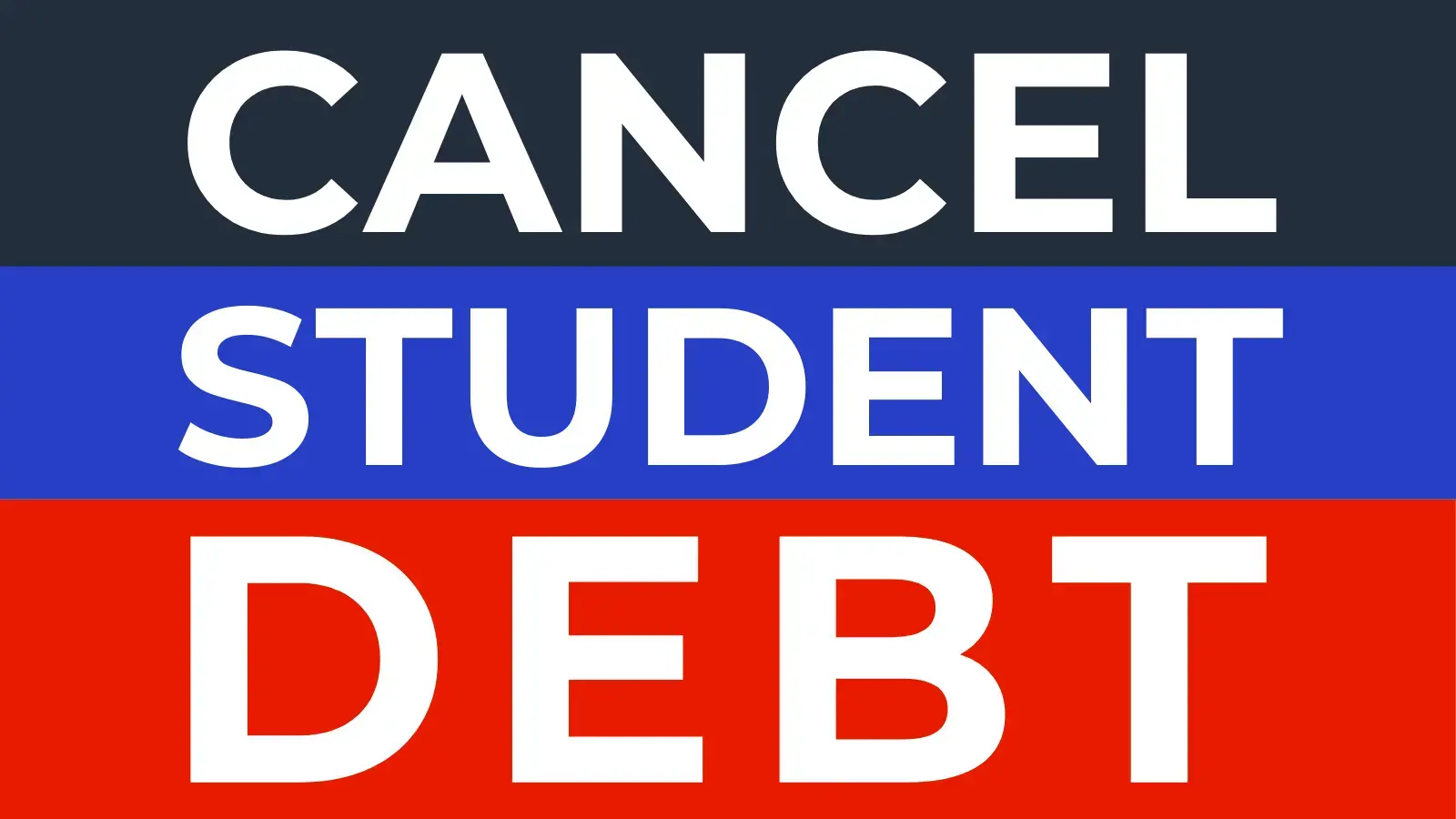Big News for Student Loan Borrowers + Apply for Public Service Loan Forgiveness by October 31!
The Biden Administration announced plans to cancel $10,000 in student loan debt, offering relief to 20 million Americans taking on debt to pay for the increasing costs of higher education.

“President Biden has done the most of any president to pause and cancel student loan debt, but this still only scratches the surface of the student loan problem. Big reforms are needed,” said Mari Estrada, early childhood studies lecturer at CSU Channel Islands.
Estrada and her husband work in higher education and have student loans. Their daughter was accepted to Dartmouth College, but decided she couldn’t afford to attend and chose a CSU campus. Estrada’s son, a high school senior, is questioning whether college is worth the cost.
“We tell everyone that a college degree is needed to get an entry-level job, but they graduate to earn poverty wages. I’m glad we’re organizing for more change,” Estrada said.
President Biden’s reforms also provide $20,000 in loan forgiveness to those who received Pell Grants. To qualify for the $10,000 or $20,000, borrowers need to earn less than $125,000 per year ($250,000 for couples).
The changes extend the COVID-19-inspired pause on loan repayments through the end of 2022. The reforms also lower the cap on income-based repayment programs from 10 percent of income to 5 percent. More details here.
While last week’s announcement is welcome news, CFA members will continue to advocate for cancellation of all student debt and tuition-free education.
Grassroots advocacy from students, education advocates, unions, and others has been working for student debt relief for years, and has recently focused efforts on President Biden, who campaigned in 2020 on canceling student debt.
It’s the least he could do. As a U.S. senator, President Biden helped set America on a path to today’s $1.9 trillion in student debt by supporting a disastrous congressional move in 2005 that stripped borrowers’ ability to discharge student loan debt through bankruptcy.
Research shows that students of color and those from low-income families bear the largest burden of student debt. Students of color are more likely to take on student debt and disproportionately struggle to pay it back at higher rates than their white counterparts, perpetuating a “vicious cycle” of economic inequality along racial lines,” according to the Student Borrower Protection Center.
CFA Dominguez Hills member Monique Turner is happy that many borrowers will get some type of relief, but thinks future efforts should be done on a case-by-case basis and target students from low to moderate socioeconomic status.
“People got thousands, even millions, in their PPP (Paycheck Protection Program) loans forgiven. We’re in a field to help students and help others. We should be given the same leeway as businesses who got their PPP loans forgiven,” said Turner, a psychology lecturer at CSU Dominguez Hills.
Turner and Estrada agree with others that relief for student loan borrowers needs to be accompanied by reforms to the rising cost of college.
Public Service Loan Forgiveness Program Deadline Approaches
In addition to the student loan debt changes, CFA members might be eligible for a recent overhaul of the Public Service Loan Forgiveness (PSLF) program.
Borrowers have to apply for the program by October 31, so help CFA spread the news!
Student loan borrowers who work in public service – think educators like CFA members, social workers, and non-profit employees – will get more flexibility in recently announced changes to the popular federal program.
The program revamp will provide borrowers a retroactive waiver on previously disqualified loan payments and allow different repayment plans previously ruled ineligible.
To benefit from the temporary PLSF program changes, borrowers – including CFA members – who have not yet applied for PSLF must do so before October 31, 2022. Enrollment in the program is not automatic – borrowers must opt in by the end of October.
Join California Faculty Association
Join thousands of instructional faculty, librarians, counselors, and coaches to protect academic freedom, faculty rights, safe workplaces, higher education, student learning, and fight for racial and social justice.